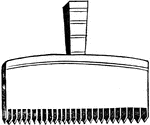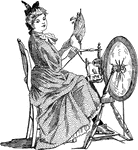Clipart tagged: ‘weave’
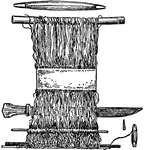
Hand Loom
An illustration of a hand loom. he earliest looms were vertical warp-weighted looms, with the warp threads…

Jacquard Machine and Harness
Originally the Jacquard machines were mechanical, and the fabric design was punched in pattern cards…

Spinning Process in the Manufacturing of Jute
In the last step of the manufacturing process of the jute plant, the material is taken on bobbins to…
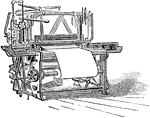
Loom
The first completely automated loom was made by Jacques Vaucanson in 1745. A different power loom was…

Complete pin loom
A diagram of a complete pin loom. Notice the pins holding the thread to the loom and the top and bottom.

Weaving Loom
This machine is used to weave cloth, the purpose of any loom is to hold the warp threads under tension.
Threaded shuttle
The shuttle is a device in which the thread is woven between the warps to create fabric.

Canadian Snow Shoe
"A contrivance attached to the foot to enable the wearer to walk on deep snow without sinking to the…
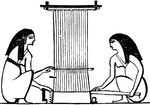
Egyptian Weaving
"The use of the spindle and loom, sewing, braiding, etc, form the subjects of many of the paintings,…
